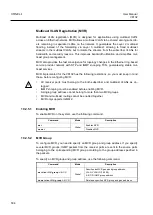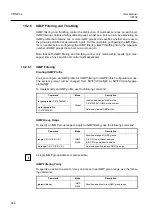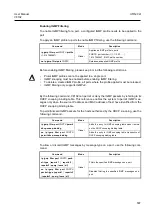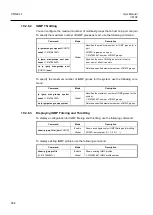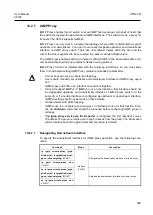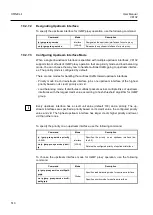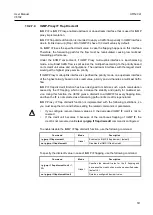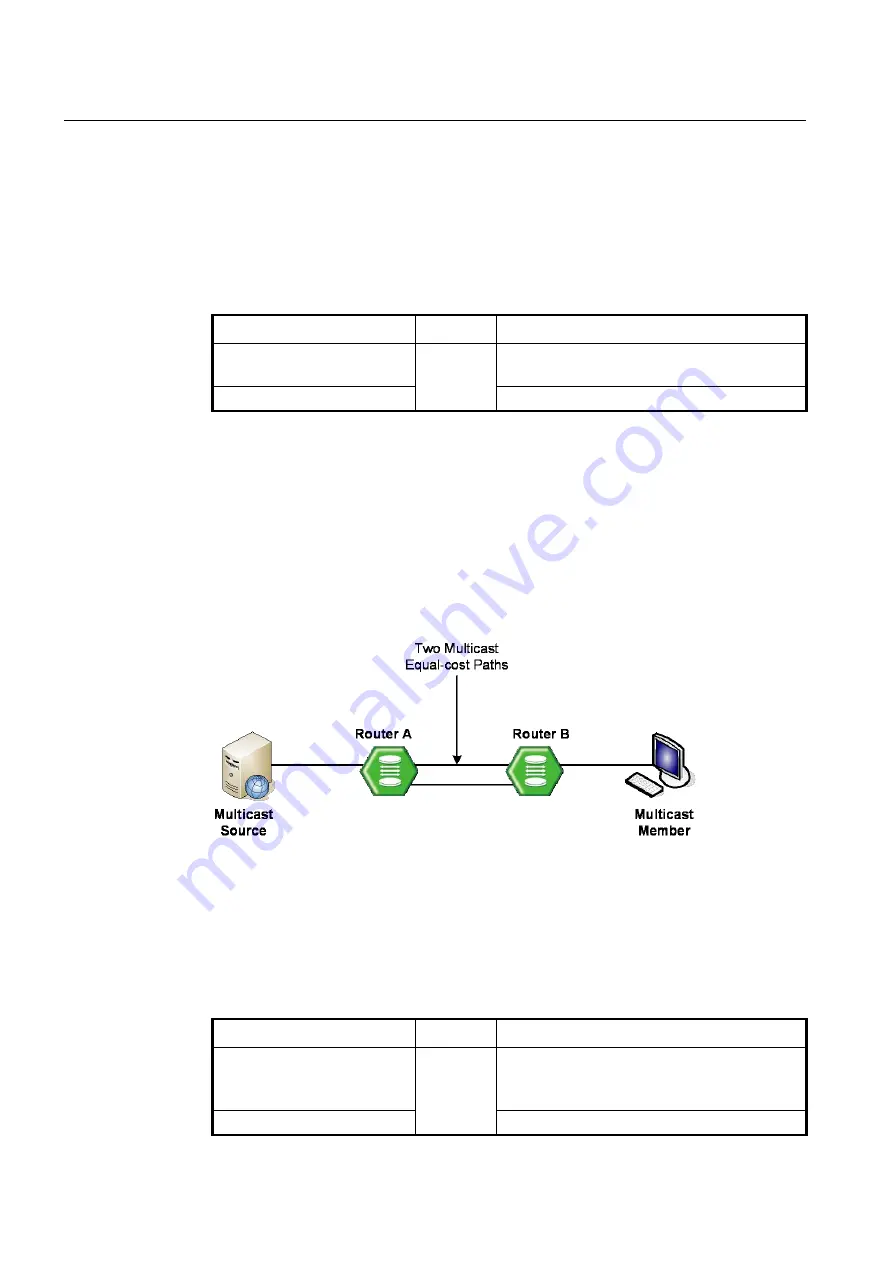
UMN:CLI
User Manual
V8102
518
10.3.1.2
TTL Threshold
You can specify a TTL threshold for multicast packets on an interface. This configuration
is used on a border router which limits a multicast domain, since only the multicast pack-
ets with a TTL value greater than a TTL specified on an interface are forwarded to out-
going interfaces. If you intend the router to operate as a border router, the TTL threshold
must be a very high value.
To specify a TTL threshold for multicast packets, use the following command.
Command
Mode
Description
ip multicast ttl-threshold
<0-255>
Interface
[VLAN]
Specifies a TTL threshold for multicast packets.
0-255: TTL value (default: 1)
no ip multicast ttl-threshold
Deletes a specified TTL threshold for multicast packets.
10.3.1.3
ECMP Load Splitting
Multicast routing protocols have different forwarding policies for the equal cost multipath
(ECMP). In case of PIM, the interface with highest IP address is used to forward multicast
traffic over the equal cost multipath.
The purpose of this feature is load splitting for forwarding multicast traffic over ECMP, al-
lowing more efficient use of network resources and preventing traffic congestion. With this
feature, multicast traffic is split across the equal cost multipath based on either its source
address or its source and group address.
Fig. 10.5
Multicast Equal Cost Multipath (ECMP)
ECMP load splitting has two options for next hop decision:
•
srcip
selects next hop based on source address.
•
srcgrpip
selects next hop based on both source and group address.
To enable ECMP load splitting, use the following command.
Command
Mode
Description
ip multicast multipath
[
srcip
|
srcgrpip
]
Global
Enables ECMP load splitting.
srcip: source address (default)
srcgrpip: source and group address
no ip multicast multipath
Disables ECMP load splitting.

